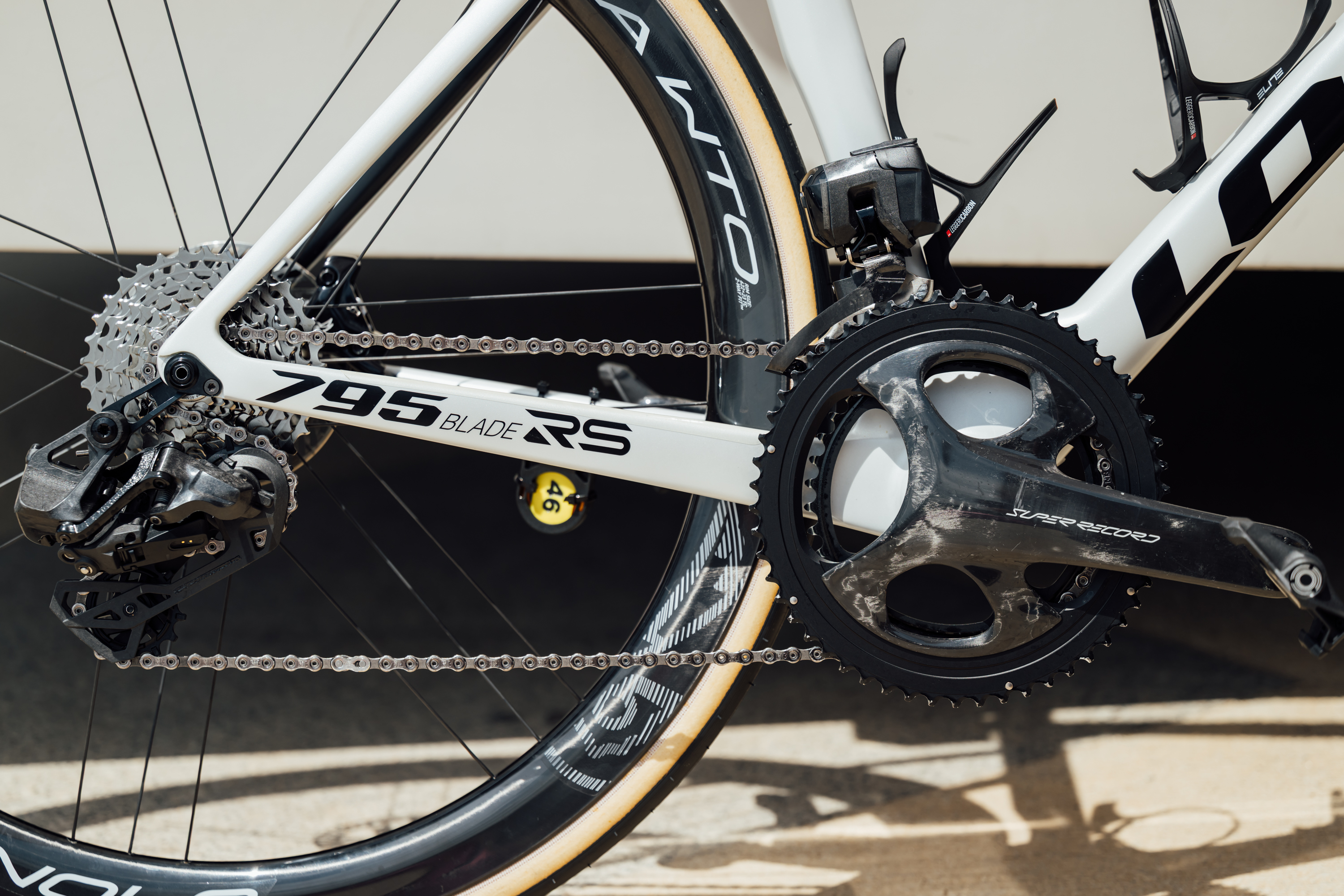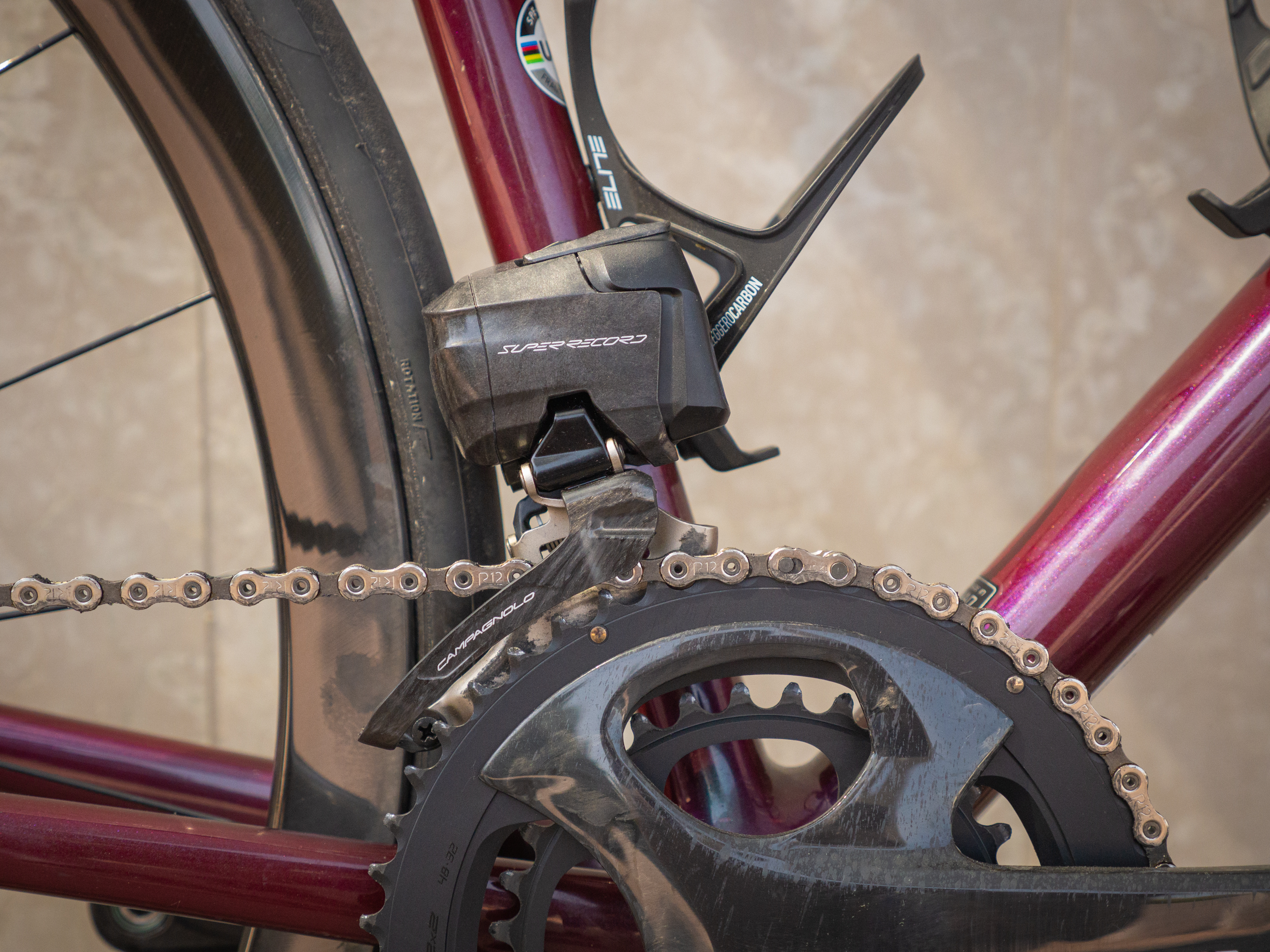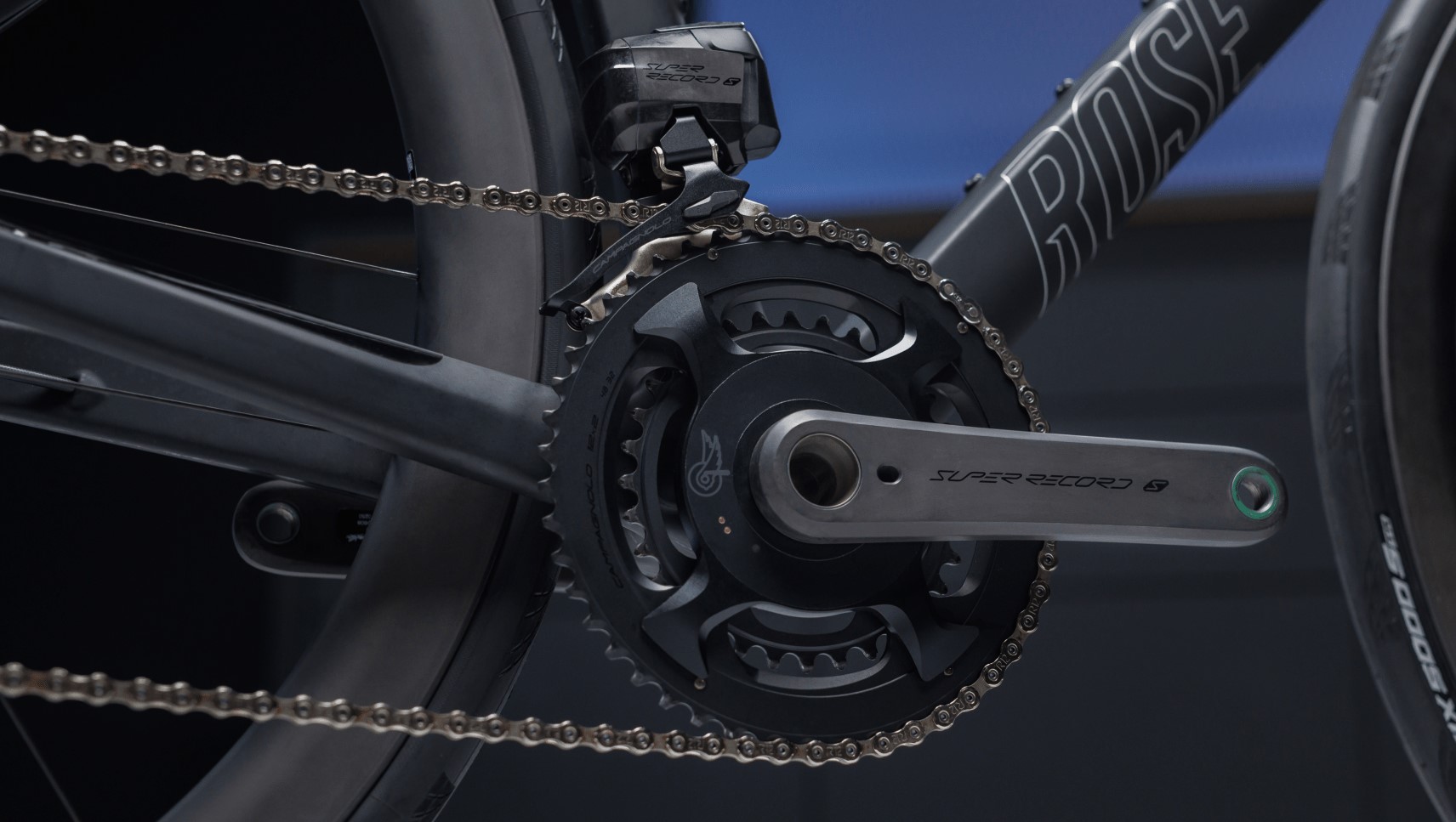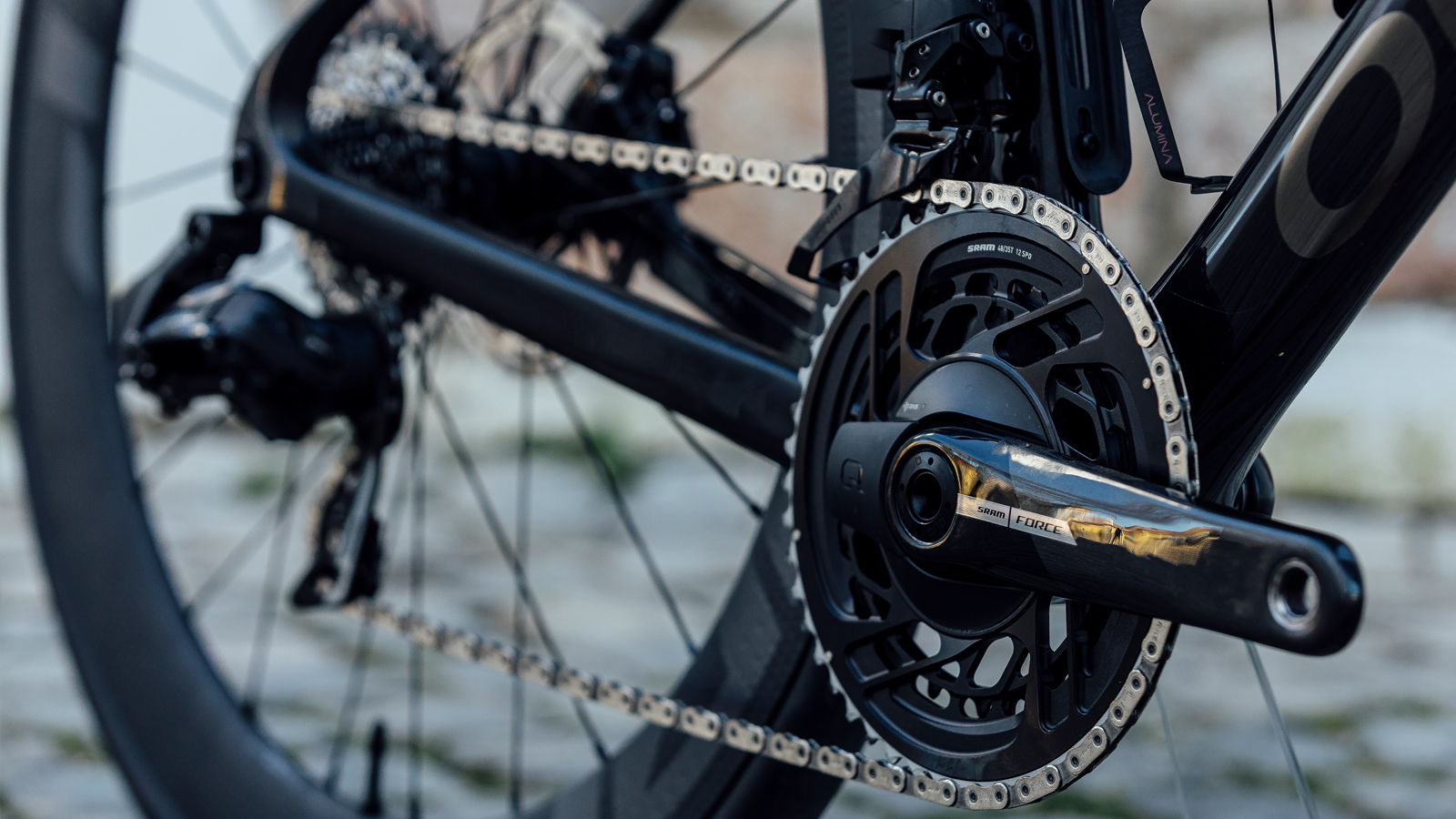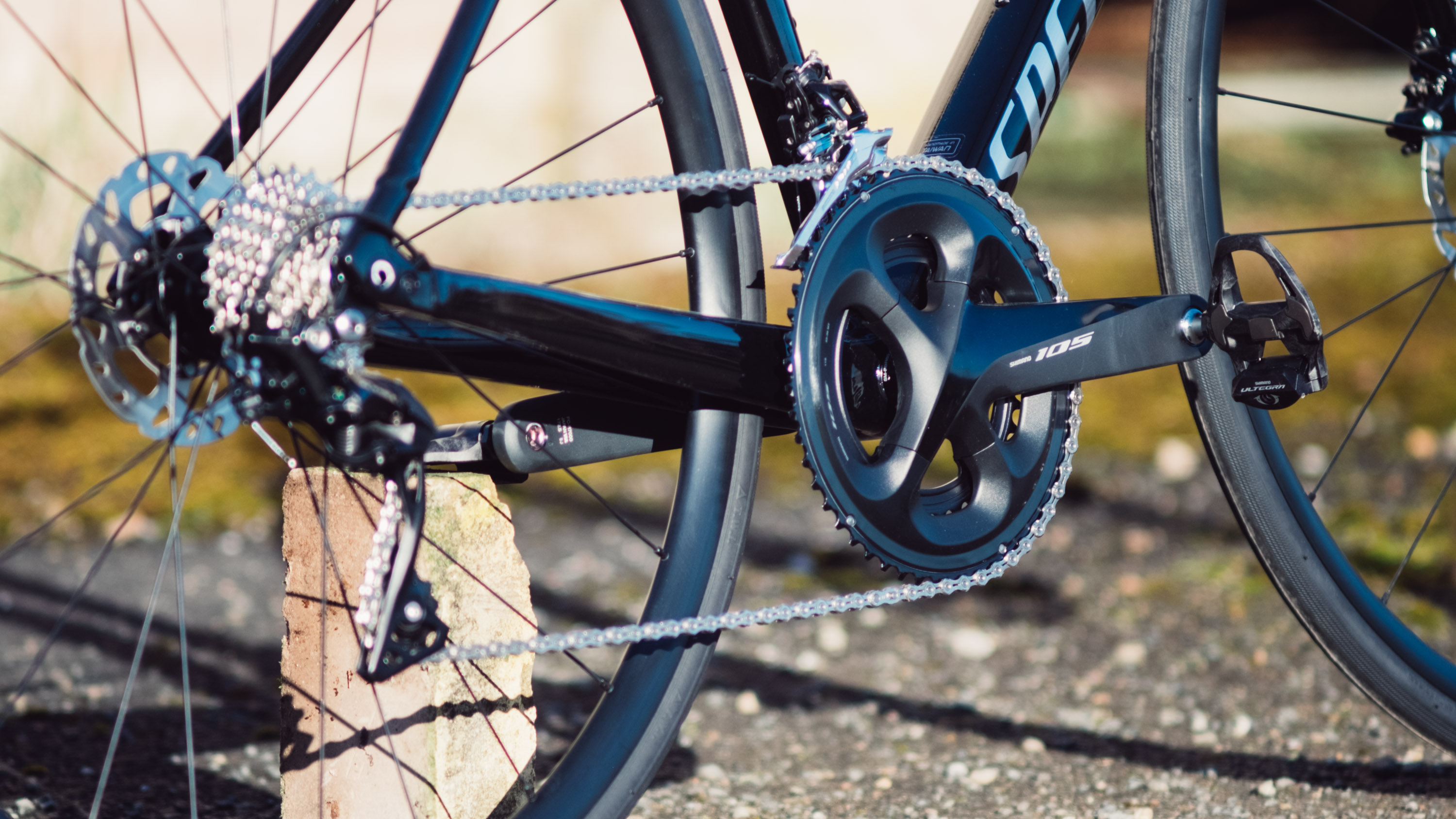Road bike groupsets 2025: All the options from Shimano, SRAM, Campagnolo and more
An overview of the current Shimano, SRAM and Campagnolo road bike groupsets, as well as options from FSA and Rotor, and a guide to how to choose the best groupset for you

The choice of road bike groupsets is huge, from the latest 12- and 13-speed wireless electronic tech through to basic 8 or 9-speed cable-actuated set-ups.
There's an increasing number of electronic groupset options available with a wider range of prices. They were once the domain of the best road bikes in the higher price brackets, but you can find electronic options on mid-priced bikes these days too. They'll probably never make it down to the best budget road bikes, but trickle-down-tech has come a long way in recent years.
Here, we'll run through all the road bike groupset options available from the big three brands: Shimano, SRAM and Campagnolo, as well as some more leftfield choices, with everything from 13 speeds down to eight-speed entry-level groupsets.
High-end groupsets increasingly include hydraulic disc brakes only, which gives you better stopping power. At the lower tiers, conversely, hydraulic disc brakes are not an option, although cable-operated disc brakes are an alternative to rim brakes.
If you're not sure what you're looking for yet we've put together a buyer's guide at the bottom to help guide you towards the best option for you.
Road bike groupset hierarchies by brand
Before we dive into the myriad options out there, it's useful to get a primer on where each groupset in the list sits in the manufacturer's respective ranges, that way you'll be better equipped to compare Super Record with Dura-Ace, and will be less likely to waste your time trying to compare Tiagra with Red.
Shimano
Shimano's road bike groupsets are the most commonly specced on complete bikes. They top out with Dura-Ace Di2, a 12-speed electronic groupset that's the most used in the pro peloton. Ultegra Di2 and 105 Di2 are also electronic, before you move into Shimano's mechanical groupsets.
These go from 105, which is 12-speed, all the way down to Cues, which has eight speeds. There's currently no 11-speed option and only in-series hydraulic disc brakes for 105 and Tiagra, with Tiagra, Sora, Claris and Cues offering rim brakes.
Groupset | Speeds | Electronic? | Brakes |
|---|---|---|---|
Dura-Ace R9200 Di2 | 2x12 | Yes | Disc/rim |
Ultegra R8100 Di2 | 2x12 | Yes | Disc/rim |
105 R7100 Di2 | 2x12 | Yes | Disc |
105 R7100 | 2x12 | No | Disc |
Tiagra R4700 | 2x10 | No | Disc/rim |
Sora R3000 | 2x9 | No | Rim |
Claris R2000 | 2x8 | No | Rim |
CUES | 2X10/11, 1x11 | No | Disc |
SRAM
SRAM has four levels of 12-speed AXS wireless electronic groupsets: Red, Force, Rival and Apex. Apex is also available with mechanical shifting and all these groupsets are disc brake only. Apex Eagle has a very wide range and is more suited to gravel bikes, but we've included it here for completeness.
Below this, you can still purchase SRAM's legacy 11-speed mechanical groupsets: Force, Rival and Apex. Force and Rival are available as 2x11 and 1x11 with rim brakes or hydraulic disc brakes, while Apex is 1x11 and hydraulic brakes only and more geared to gravel bikes.
Groupset | Speeds | Electronic? | Brakes |
|---|---|---|---|
Red AXS | 2x12, 1x13 | Yes | Disc |
Force AXS | 2x12, 1x13 | Yes | Disc |
Rival AXS | 2x12, 1x13 | Yes | Disc |
Apex XPLR AXS | 1x12 | Yes | Disc |
Apex XPLR | 1x12 | No | Disc |
Apex Eagle | 1x12 | No | Disc |
Force | 2x10/11, 1x11 | No | Disc/rim |
Rival | 2x11, 1x11 | No | Disc/rim |
Apex 1 | 1x11 | No | Rim |
Campagnolo
Campagnolo Super Record Wireless has the distinction of being the most expensive groupset you can purchase. There's now a cheaper version, Super Record S Wireless, which is closer in price to Shimano Dura-Ace and SRAM Red AXS.
Campagnolo still lists its previous generation Super Record EPS electronic groupset on its site. Below this, Super Record, Record and Chorus are all 12-speed mechanical with rim and disc brake options. Finally, Centaur is 11-speed and rim brake only.
Groupset | Speeds | Electronic? | Brakes |
|---|---|---|---|
Super Record 13 | 2x13 | Yes | Disc |
Super Record WRL | 2x12 | Yes | Disc |
Super Record S Wireless | 2x12 | Yes | Disc |
Super Record EPS | 2x12 | Yes | Disc |
Super Record | 2x12 | No | Disc/rim |
Record | 2x12 | No | Disc/rim |
Chorus | 2x12 | No | Disc/rim |
Centaur | 2x11 | No | Rim |
Other brands' road bike groupsets
Finally, there are the minor players in the groupset market, including FSA, Rotor and MicroShift.
In recent years, we have also seen several Chinese brands making significant advancements in drivetrain tech. Leading Chinese brands like Wheeltop and Ltwoo have developed their own electronic road groupsets. From our experience, they are yet to match the polished performance of the big three, perticulalry when it comes to supporting apps and warrenties, although it must be noted that they are noticeably more affordable.
Road bike groupsets by price
As you can see, there are a lot of choices out there, so we've split things into electronic groupsets, mechanical groupsets, and budget groupsets, so depending on what you're aiming for, you can skip to the section that's most relevant to you.
Electronic groupsets
Electronic groupsets are standard on WorldTour bikes now. In fact, it's now considered news if a pro rider doesn't use one.
The three major players all have electronic options. The switch to wired electronic shifting was big news a few years ago, but all three big brands (plus FSA) now offer wireless shifting, although in Shimano's case, the derailleurs themselves are both wired to a central battery.
Electronic shifting is gradually trickling down the groupset hierarchy, with Shimano having three options and SRAM four, although Campagnolo currently offers three(plus the Super Record EPS legacy groupset).
Just do yourself a favour and don't forget to charge your batteries; electronic groupsets can go a long time on a single charge, but not indefinitely. A flat battery won't stop you in your tracks, but it will leave you riding single-speed home.
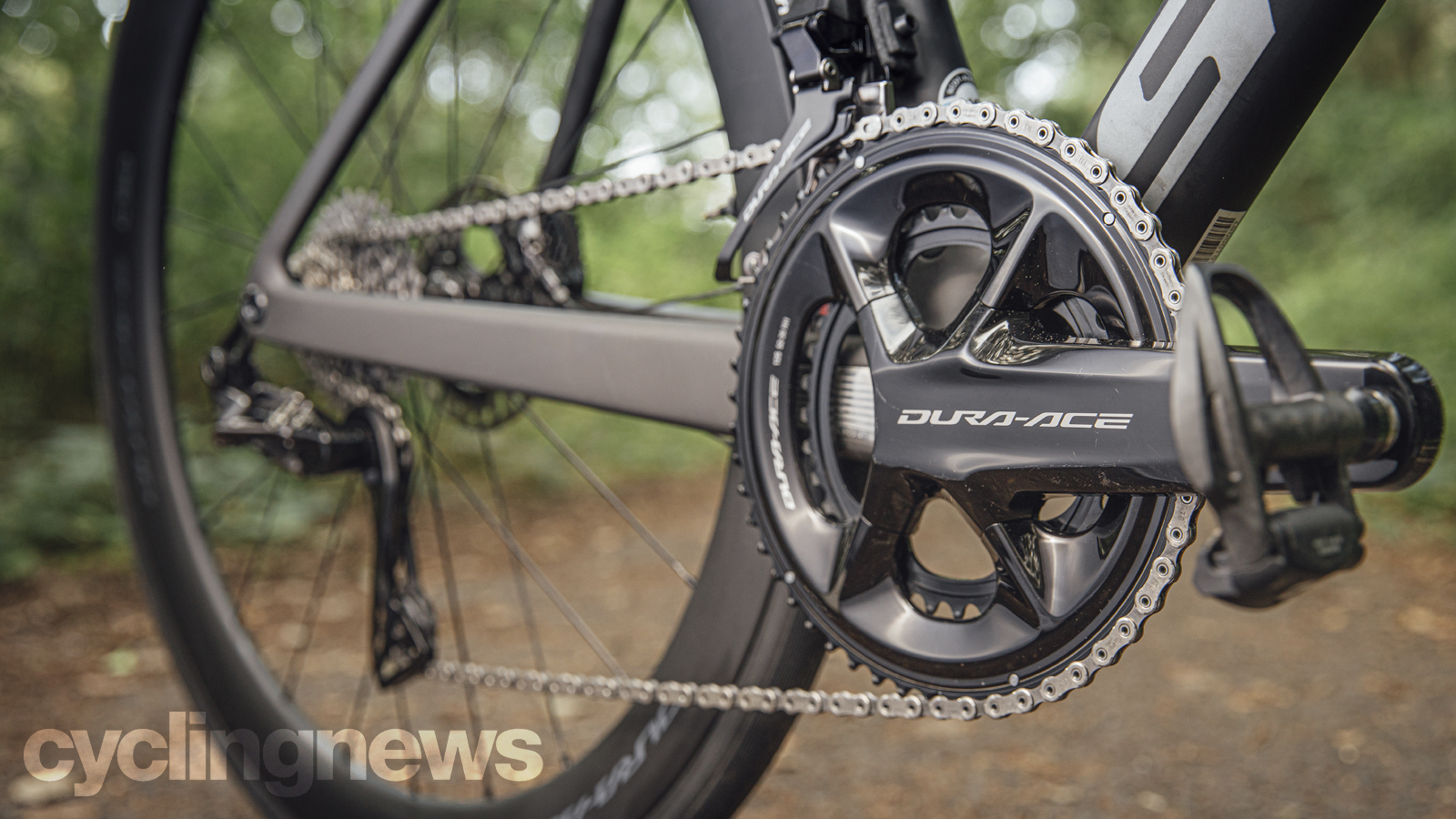
Specifications
Reasons to buy
Reasons to avoid
Improvement, rather than a total revolution, has been the name of the game from Shimano when it comes to upgrading Dura-Ace from the previous generation.
While Dura-Ace 9100 was an exceptional offering, Shimano has improved on some of its minor shortcomings, namely the braking and ergonomics, in addition to moving to 12-speed and a semi-wireless system.
As with Ultegra and offerings from SRAM, there is no option for cable shifting, it is a pure electronic setup, but if you want the very best in terms of shifting performance, that isn't going to come from cables in this day and age, so it's no great omission.
Check out our Shimano Dura-Ace Di2 review to see how we got on with the system in the real world.
Specifications
Reasons to buy
Reasons to avoid
RED AXS is SRAM's top group and had an upgrade in mid-2024. It's wireless and electronic. The road-oriented 2x12-speed option is claimed to be lighter than Dura-Ace and includes the option of a built-in Quarq power meter.
SRAM has removed a few teeth from the front chainring; the biggest commercially available double-ring option is now a 50/37T, though the pros have been riding 54/41T rings. However, there is no loss in gear range, due to the 10-tooth smallest sprocket, while the 36-tooth largest 2x option gives plenty of gear range spread.
There's also the option to go 1x, when you can use the XPLR version of the rear derailleur to run a 10-46T cassette. This is now a 13-speed and uses a Full Mount derailleur, although this is only compatible with bike frames with a UDH derailleur hanger interface.
The chain has a striking design, using a flat top, it's also narrower and claimed to be stronger and quieter.
The rear derailleur is clutched using a fluid-based damper, which SRAM says doesn't add shifting resistance like a roller-bearing clutch system, while also significantly reducing chain bounce.
For more details, check out our in-depth SRAM Red AXS review.
Campagnolo Super Record 13
Specifications
Reasons to buy
Reasons to avoid
Ever since Campagnolo introduced its 13-speed Ekar gravel groupset in 2020, there has been speculation about when Campagnolo would add an extra sprocket to its road groupset. The subsequent Campagnolo Super Record WR release remained 12-speed, instead focusing on upgrading Campy's top-tier groupset to a fully wireless electronic system.
Campagnolo launched its latest Super Record groupset 13 as a mark of intent. Not only is it the world's first 2x13 groupset, Campagnolo states that it's 'the first groupset starting a general redefinition of the brand’s identity, a new strategy in line with Campagnolo’s legacy of innovation.'
Why 13-speed? More sprockets reduce the jumps between gear ratios, helping fine-tune the perfect cadence. Squeezing an extra sprocket into the block should also speed up shifts. Campagnolo says SR13 to be the 'fastest on the market', claiming to be able to perform a full cassette shift in 2.4 seconds when shifting up and 1.9 seconds when shifting down..
As you would expect from one of the most premium road groupsets, there's lots of carbon fibre on show, yet the derailleur has been redesigned with Campagnolo shaving off '25% reduction in lateral bulk' and a more svelte profile. The front derailleur has also been redesigned with a slimmer design and a new battery aiding tyre clearance. Campagnolo says the batteries should last for 750kmin normal conditions.
Die-hard Campagnolo loyalists will be pleased to see the return of the famous Campagnolo thumb shifter button, a feature that was missing from the Super Record WR ergopower shift levers. Following SRAM and Shimano's lead, there's a new 'smart button' on each shifter, which can be set up to control gear shifting, a computer or control any other Bluetooth device.
Despite being Campagnolo's latest groupset, the Italian's have managed to reduce the cost of the groupset, with changes to production processes and investing in automation, dropping the price significantly compared to Super Record.

Specifications
Reasons to buy
Reasons to avoid
FSA has updated its K-Force WE electronic groupset, with the new model now being 12-speed. The brand has a presence in components such as cranksets to back up its move into complete groupsets and the K-Force WE 12s groupset is also Shimano compatible.
As with Shimano electronic groupsets, it's semi-wireless, with the shifters communicating wirelessly with derailleurs powered by a central internal battery, although FSA's battery has twice the capacity of Shimano's.
It's also hydraulic disc brake only. A rocker switch on the rear edge of the carbon brake levers operates the derailleurs.
There are 54/40T, 50/34T and 46/30T chainring options with a one-piece design, which cater for everything from road racing to gravel. These are paired with 11-25T, 11-28T and 11-32T cassettes, which give a narrower range than the alternatives, but still a sub-1:1 ratio for gravel riders.
The entire groupset weighs 2,423g, which is comparable to the top-tier groupsets from the big-name brands. There are still deficiencies, like the absence of a companion app, but the K-Force WE 12s looks like a real alternative.
Our FSA K-Force WE 12s review goes into more details on the system if you're curious.
Campagnolo Super Record Wireless
Specifications
Reasons to buy
Reasons to avoid
Campagnolo was fashionably late to the disc brake party, but this tardiness allowed the Italian manufacturer to avoid the performance and aesthetic growing pains SRAM and Shimano experienced. Using flat-mount callipers, the front brake comes with fittings for 160mm and 140mm rotors.
Super Record Wireless groupset is disc brake only and, as its name says, fully wireless, with a battery attached to each derailleur. It's also dispensed with Campagnolo's thumb shifter, which has been a feature of all its groupsets since combined shift/brake levers first emerged. The new shifters place one shift button above the other, behind the brake lever.
Another change is that Campagnolo has followed SRAM, with its cassettes now starting with a 10-tooth smallest sprocket, which has allowed it to shrink the chainrings and the largest cassette sprocket, while still offering the same extended range.
As one of the most expensive drivetrains you can buy, Super Record is heavy on carbon fibre, titanium, and ceramic bearings, which drives the price up. If you really want to get spendy, there's the in-series HPPM power meter.
Unlike the latest Super Record 13 and the brand's gravel groupset, Ekar, which is also 13-speed, Super Record Wireless has 12 speeds at the rear, although the cassette still needs a Campagnolo N3W freehub on the wheel for it to fit.
Campagnolo Super Record S Wireless
Specifications
Reasons to buy
Reasons to avoid
Campagnolo Super Record Wireless is a wallet-busting option, but Super Record Wireless S provides a (slightly) more budget-friendly alternative with the same tech, that's around £1,000 / $1,000 cheaper and closer to the price of Shimano and SRAM's top offerings.
The crankset has reverted to standard sizing and there's a new 11-32T cassette added to those available with Super Record. There's a power meter option too.
The components are matt black rather than Super Record's carbon weave and the crank arms are solid rather than hollow carbon. Along with other materials changes, this adds around 150g to the groupset weight.

Specifications
Reasons to buy
Reasons to avoid
Shimano Ultegra offers nearly the same performance as the flagship Dura-Ace, with only a small weight penalty and a substantially lower price tag.
With 12 speeds at the back, Ultegra is available with hydraulic disc or standard rim brakes. When it comes to shifting quality and speed the difference between Ultegra and Dura-Ace is negligible and the second-tier group also offers Syncro and semi-Syncro shifting options.
Like Dura-Ace, the hollow cranks are only available in one bolt-circle diameter, meaning they will work with chainrings from 34 teeth all the way up to 55. There's also a dual-sided power meter option.
For fans of decent brakes however, it is heartening to see the second-tier option benefit from the Servo Wave system brought in previously at the Dura-Ace level, whereby the pads are spaced further apart for less chance of rubbing, but with an increased pad take-up in the early part of the lever stroke to account for the space, and also provide better fine level modulation.
To see how we got on with the groupset, take a look at our Shimano Ultegra Di2 8100 review.
SRAM Force AXS
Specifications
Reasons to buy
Reasons to avoid
Much the same as Ultegra is to Dura-Ace, so the SRAM Force group is to Red. It's had a mid-life facelift and the new Force AXS looks more akin to Red, with a single-piece double chainring with an integrated power meter option, while the lever hoods have shrunk.
It's 12-speed, sees the same motors and high-speed chipset in the wireless derailleurs, and the Orbit fluid-based damper too, however, there's a bit less carbon, no ceramic bearings to be found and a small weight penalty over Red.
While the Force AXS chainset is a few grams heavier than the Red version, for the consumer, we would argue it's a better option. Force AXS also uses a flat top chain, which some friction testing has shown to actually be about half a watt faster than its Red-branded compatriot.
There are a huge number of options, including both 1x and 2x, wide range cassettes and Wide chainsets to give more tyre clearance for gravel.
Read our SRAM Force AXS story for more.
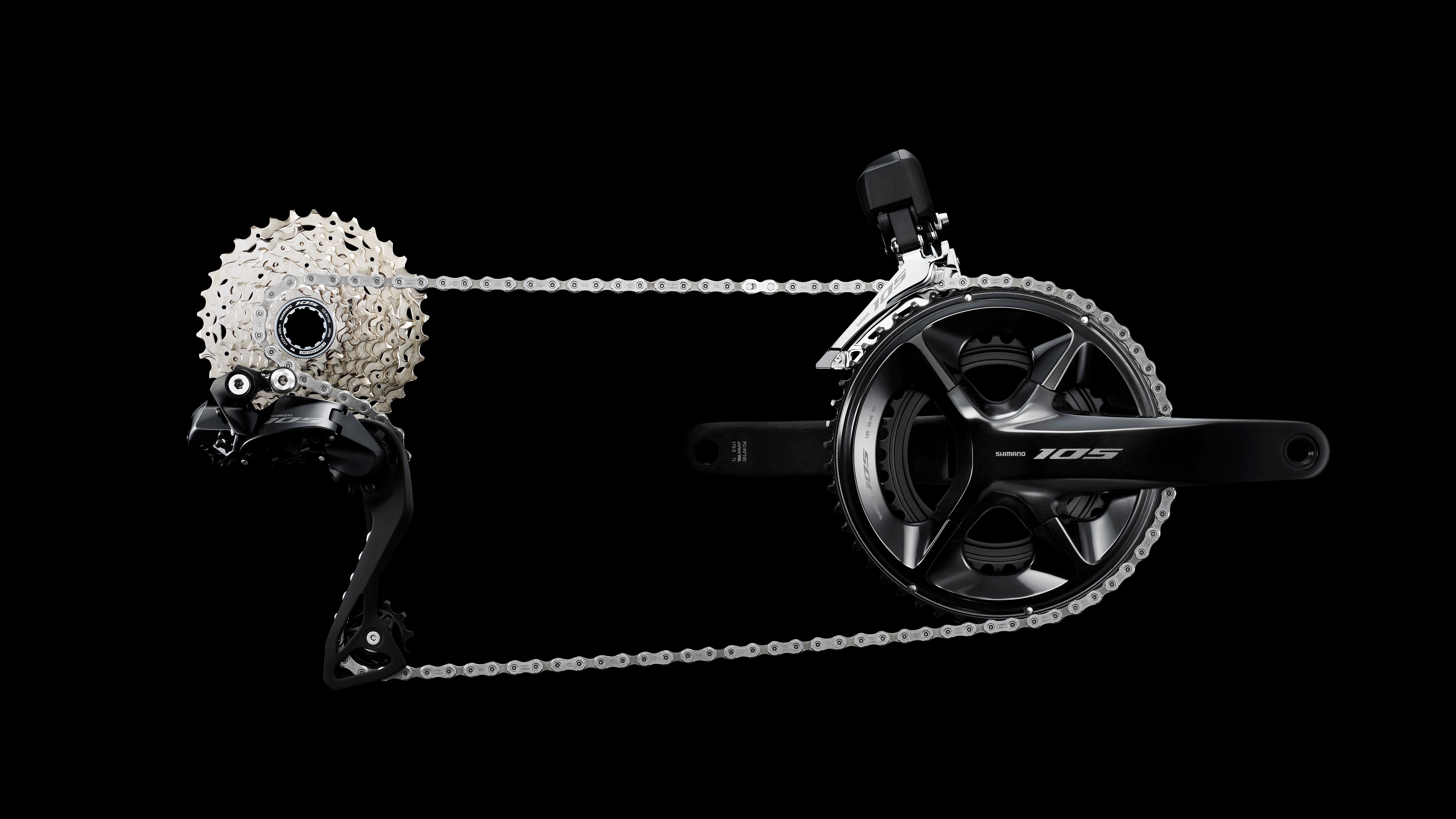
Shimano 105 Di2
Specifications
Reasons to buy
Reasons to avoid
Shimano 105 Di2 brings 12-speed electronic shifting to Shimano's third-tier groupset. It works similarly to Dura-Ace and Ultegra, but dispenses with some of their functionality, using Hyperglide shifting in the cassettes rather than the faster-shifting Hyperglide+. There's also less functionality to the levers, but 105 Di2 is still semi-wireless and configurable via the Shimano E-Tube phone app. It's also disc brake only.
There are only two chainset options, a compact 50/34T or semi-compact 52/36T, but the two cassette options run out to a non-series 11-36T to give a lower gear than Ultegra or Dura-Ace. That makes 105 Di2 a good option for all-rounder bikes, rather than the race/performance end of the spectrum targeted more by Shimano's two higher tiers.
To learn more, read our Shimano 105 Di2 launch story.
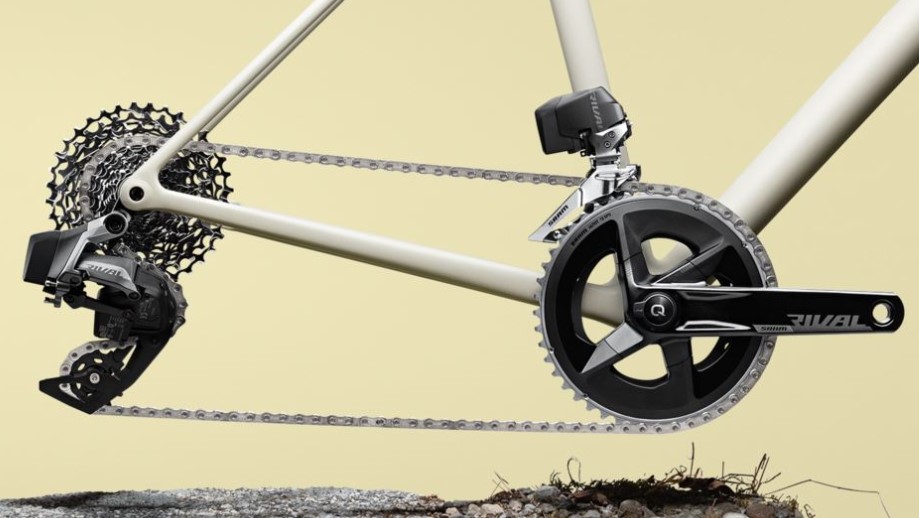
Specifications
Reasons to buy
Reasons to avoid
SRAM has progressively trickled down its wireless electronic shifting to lower tiers of its groupset hierarchy. Rival AXS has the same functionality and wide range of configurations as its higher spec groupsets, just with slightly heavier materials and a lower price tag.
There is some functionality that hasn't trickled down from Red AXS, like bite point adjustment for the hydraulic brakes, but it's nothing that can't be lived without. In fact, the second-generation Force AXS has also lost bite point adjustability in favour of smaller lever bodies. The clutch in the Rival rear derailleur is also sprung rather than using the fluid damper of Red and Force.
There are 1x and 2x configurations, both with a single-sided power meter as an option and both are available with Wide as well as standard bottom bracket spacing.
Despite being less than half the price of RED, Rival still offers superb shifting and braking performance. Tom tested the groupset when it was released and found shifting to be smooth and effortless, as you would expect from an electronic groupset. Although he found the lever feel to be a little dull, there was no lack of power and the performance was consistent in all conditions.
For more details, head over to our full SRAM Rival eTap AXS groupset review.
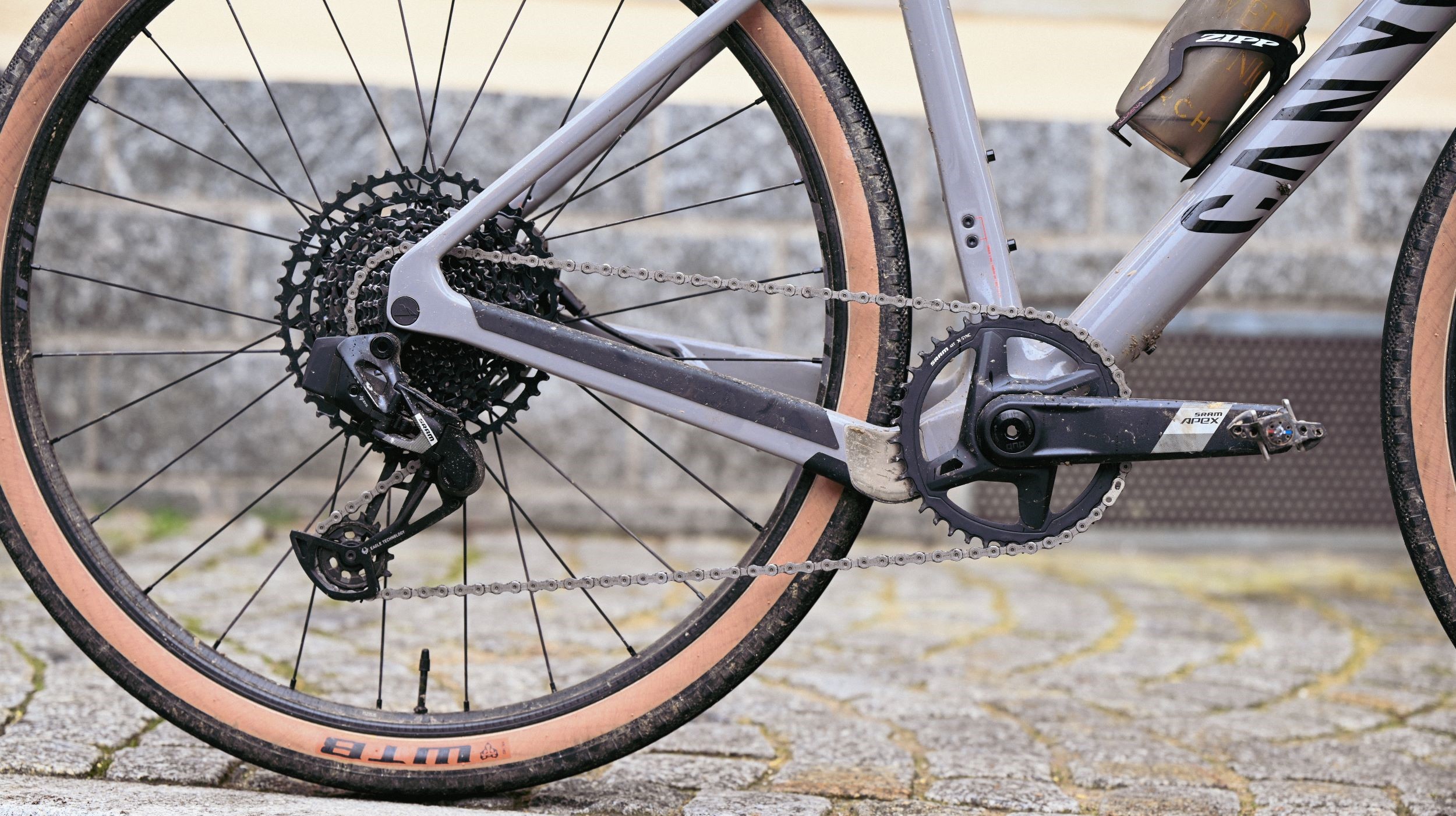
Specifications
Reasons to buy
Reasons to avoid
The onward march of SRAM AXS 12-speed electronic shifting continues with Apex AXS, but with a twist. The groupset is single chainring only, with Wide bottom bracket spacing and, in XPLR configuration, offers an 11-44T cassette as well as 10-36T and 10-44T options. The 11T starter makes it compatible with standard 11-speed Shimano freehubs, rather than needing a SRAM XDR version. There's even a single-sided power meter available.
If you're happy running 1x, then Apex becomes a viable option; it saves some money over Rival but doesn't make any sacrifices in performance. You'll have to commit to the single front ring setup, though, as there isn't a 2x lever option if you want to add a second front chainring down the line. The 1X specific setup will likely put off many road riders seeking to spruce up an existing bike or those building up a frameset on a budget, however, for all-road riders or those that might dabble in a bit of gravel, it will be less of a compromise.
Bad news, if you're looking for a mullet gravel configuration, SRAM originally offered an Apex Eagle AXS version of the groupset, which appears to be no longer available as a groupset. It's still possible to do it yourself, as all of SRAM's AXS ecosystem is compatible; you will just need to buy all the parts individually. As we'll see below, there are 12-speed mechanical options for both the standard-range XPLR and the wide-range Eagle groupsets.
Read our full SRAM Apex AXS review for more details.
Mechanical Groupsets
While electronic shifting is definitely where the future of groupset tech lies, at least at the top end, mechanical shifting is still as good as ever and will always have its fanbase thanks to its simplicity and ease of repair.
Yes, you will have to replace a gear cable or housing every so often but it will never run out of battery when you are miles from home.
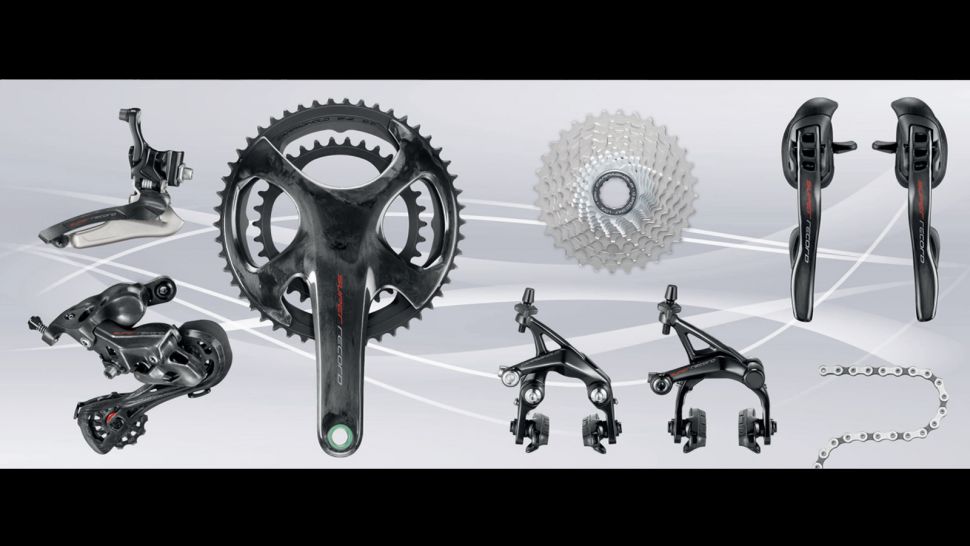
Specifications
Reasons to buy
Reasons to avoid
Campagnolo Super Record was the first groupset to make the jump to a 12-speed cassette. Utilising a direct-mount rear mech, updated front derailleur and four-arm carbon crank, the group also has improved shifter ergonomics and flat-mount disc brakes with fittings for up to a 160mm rotor.
Don't worry Campy fans, unlike the Super Record Wireless groupset, the venerable thumb shifter is still here. So is the Ultra-Shift tech, which allows for three downshifts and five upshifts with a full swing of the respective lever.
A single rear derailleur accommodates all the available cassettes including the wide range 11-34T, and the four-arm crank allows for the same compatibility with chainrings. You don't get an in-series power meter though.

Rotor 1x13
Specifications
Reasons to buy
Reasons to avoid
Rotor is always a brand to think outside the box, and its 1x13-speed hydraulic groupset is the perfect example. Launched in 2018, it was the first 1x13 groupset when Shimano and Campagnolo were making news with their 12-speed groupsets. What really makes it stand out is the method of shifting, while everyone else was faffing over batteries and motors to move the chain, Rotor opted for hydraulic fluid. The thinking here is the same as with hydraulic brakes: once you get a set properly bled, they will work perfectly for years with little to no maintenance. So why couldn't it work for a groupset?
It's an astonishing piece of engineering, using all of Rotor's CNC machining expertise. The lever bodies are very compact, as they only need to incorporate two hydraulic pistons: one for the shifting and one for the brakes.
It's only available as a 1x13 speed option, the rear mech has a clutch to keep the chain from swinging around too much and the cassettes are compatible with any standard HG freehub, so you can keep using your current wheelset. Cassettes come in a few different options, from the tightly spaced 10-36T to the capacious range of the 10-52T.
It's worth noting that although Rotor is still selling the groupset, it hasn't been updated since it was first launched, plus its limited popularity will make spares harder to come by. That said, if you're looking to make a statement with your drivetrain, nothing compares to the uniqueness of Rotor's system

Campagnolo Record
Specifications
Reasons to buy
Reasons to avoid
The only difference between Record and Super Record is that the former features slightly less titanium and carbon fibre used throughout. Most importantly, it still functions the same (including the thumb shifter), has 12 speeds at the back, a four-arm crank, comes in both rim and disc brake flavours and the derailleurs are based around the same exact design.
All of this adds up to a groupset that's around 200g heavier but with a noticeably lighter price tag.
Shimano 105
Specifications
Reasons to buy
Reasons to avoid
We proclaimed that 'cables are dead,' when Shimano launched its 105 Di2 groupset, thankfully, we were proven wrong as Shimano would later release a mechanical version of the workhorse groupset.
The updated Shimano 105 mechanical groupset is now 12-speed, with the mechanical option sharing many components with 105 Di2, including the crankset, cassettes and brakes. It's always been the workhorse in the range, relatively inexpensive but still performing really well and with a similar aesthetic to Shimano's 12-speed electronic offerings. As with 105 Di2, it's disc brake only.
Throughout the groupset, Shimano has utilised aluminium and steel in lieu of carbon and titanium, a compromise needed to hit the lower price point. You'll still find the four-arm cranks with 50/34T and 52/36T options, paired to 11-34T and 11-36T cassettes for turn-a-mountain-into-a-molehill climbing.
Campagnolo Chorus
Specifications
Reasons to buy
Reasons to avoid
Chorus takes another step down in Campagnolo's pricing hierarchy but it still offers 12 speeds, the thumb shifter and carbon crank arms.
Before the Campagnolo Ekar gravel groupset was introduced in 2020, Chorus was seen as the brand's off-road offering, thanks to its slightly different gearing combinations. Instead of the standard 53/39T chainset, Chorus is available in a more mountain-friendly 48/32T, while still offering three cassettes.
The group is available in both rim and disc brake guises, however, the latter loses the ability to adjust the bite point though you can still tailor the lever reach.
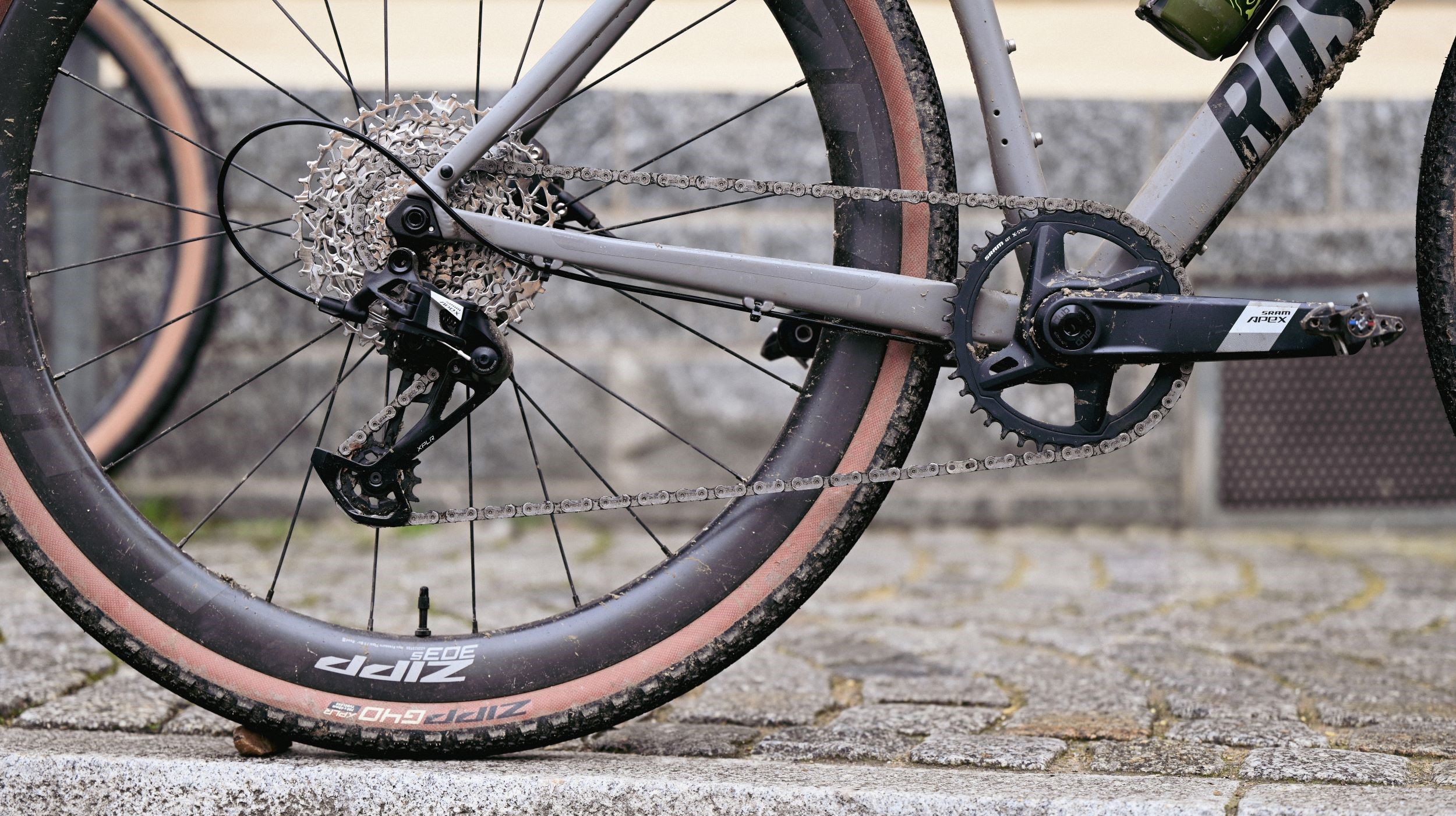
SRAM Apex 12-speed groupset
Specifications
Reasons to buy
Reasons to avoid
Alongside the electronic 12-speed Apex AXS single chainring groupset, SRAM launched equivalent cable-actuated versions.
As with the AXS groupsets, there's an XPLR version that uses road-going tech, including a flattop chain and provides either a 10-44T or an 11-44T cassette.
There's also an Apex Eagle wide-range option with 10-50T, 10-52T or 11-52T cassettes available, which uses an MTB-style Eagle chain.
You can add a single-sided power meter to both configurations.

SRAM Force
Specifications
Reasons to buy
Reasons to avoid
11-speed Force mechanical uses SRAM's DoubleTap shifting mechanism and features a YAW front mech, which avoids the need to trim as you move up and down the cassette, along with both WiFLi and standard versions of the rear derailleur. It's available in both rim and hydraulic disc brake versions and uses a two-piece arm and spider design.
Gearing comes in the form of a 50/34T or a 52/36T at the front, which can be paired to cassettes ranging from 11-25T up to 11-36T.
There is also a 1x version of Force (previously known as CX1), using many of the same components as its road-faring stablemate. The main differences are in the rear derailleur with a rolling bearing clutch, X-Sync wide narrow chainrings and the wide range cassette, which requires an XD driver.
11-speed Force 1 is still found on some bikes, but Force 22 is a rare sight now, having been superseded by AXS 12-speed electronic options.
Budget Groupsets
Groupsets have come a long way from downtube shifters, and even the lower end of the pricing spectrum performs extremely well.
Don't expect to find much carbon, titanium or ceramic here, but these groups will be hard-wearing, easy to maintain, and perhaps most importantly of all, cheap when it comes to parts replacement.

Shimano Tiagra
Specifications
Reasons to buy
Reasons to avoid
Tiagra is Shimano's 10-speed beginner road groupset, although it's found on increasingly expensive new bikes. It drops two cogs at the back, but is a significant beneficiary of trickle-down tech from Shimano's higher-end groupsets, offering designs seen at the Dura-Ace level not all that many years ago but at a budget price.
For many years, Tiagra used older-style externally routed STI levers. However, Shimano has trickled the internally routed Dual Control levers down to Tiagra, and there are also flat bar levers available. You'll find four-arm cranksets and chainrings that all utilise the same bolt circle diameter — Shimano makes these in triples for a massive gear range.
At the front, shifting borrows the design from the older generation Dura-Ace 9000 derailleur, and at the back, there is the option for a short or medium-cage derailleur to suit narrower or wider-range cassettes.
The biggest drawback here is when it does come time to upgrade, Shimano's 10-speed components aren't compatible with the 12-speed kit, so it's an all-or-nothing upgrade.
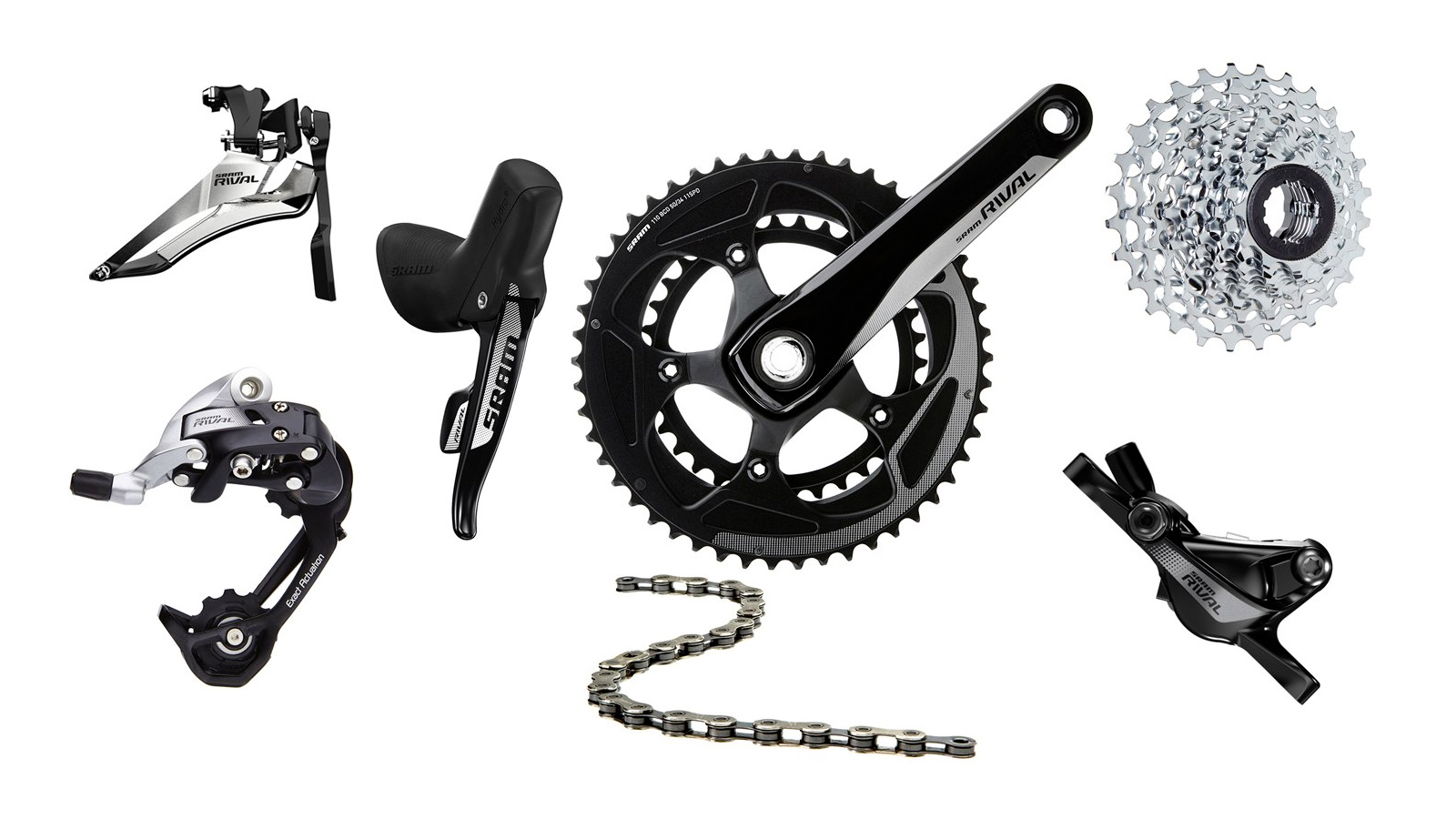
SRAM Rival
Specifications
Reasons to buy
Reasons to avoid
Rival borrows heavily from 11-speed Force; there are both 1x11 and 2x11 options with DoubleTap shifting and the YAW front derailleur that allows for trim-free cross-chaining.
At first glance, the levers look more or less identical to their Force cousins; however, the carbon lever blades are replaced by aluminium. The discernible performance difference is limited and really amounts to a different number on the scale.
With up to a 36t cog at the back, Rival 2x has standard and WiFLi rear mech options, though, at this price point, the largest chainring combo you're going to get is a 52/36T.
SRAM also produces a 1x version but it's only compatible with the 11-36T and 11-42T cassettes. To keep the chain from bouncing off the front chainring, it has narrow/wide teeth, paired with a roller-bearing clutch in the rear derailleur.
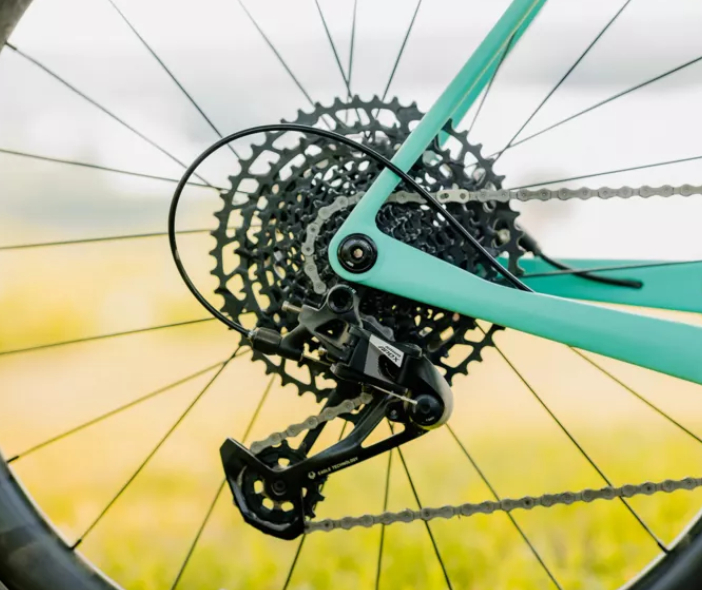
SRAM Apex
Specifications
Reasons to buy
Reasons to avoid
Apex is SRAM's entry-level road groupset, which offers 1x11 shifting. Its wide range means that it's more likely to be found on budget gravel bikes than road bikes. The rear mech has a roller bearing clutch and there is a wide-narrow chainring at the front and even hydraulic brakes. Considering the price, Apex still performs well and is a great option for new riders, winter workhorses and commuters alike.
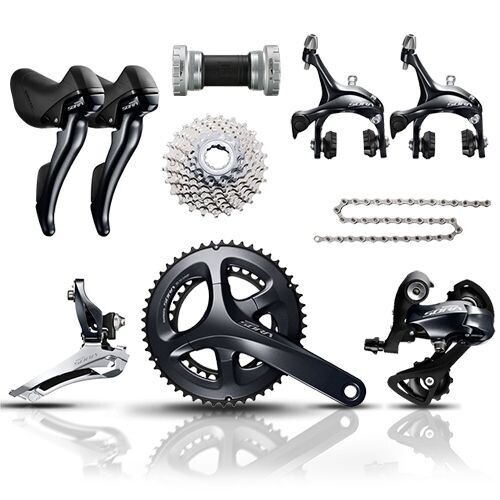
Shimano Sora
Specifications
Reasons to buy
Reasons to avoid
Shimano Sora offers a 9-speed option that's sometimes specced on lower-priced bikes, typically with price tags under £1,000 / $1,000. Like Tiagra, its trickle-down tech includes under-bar tape brake and shifter cables and a similar look to its chainset.
There are also double and triple chainring configurations, although there's only a 50/34T double. Cassettes go out as far as an 11-32T, so gear ratios are a little higher than more modern groupsets. There's no disc brake option, so any disc brake bike needs to use third-party or out-of-series Shimano mechanical disc brakes.
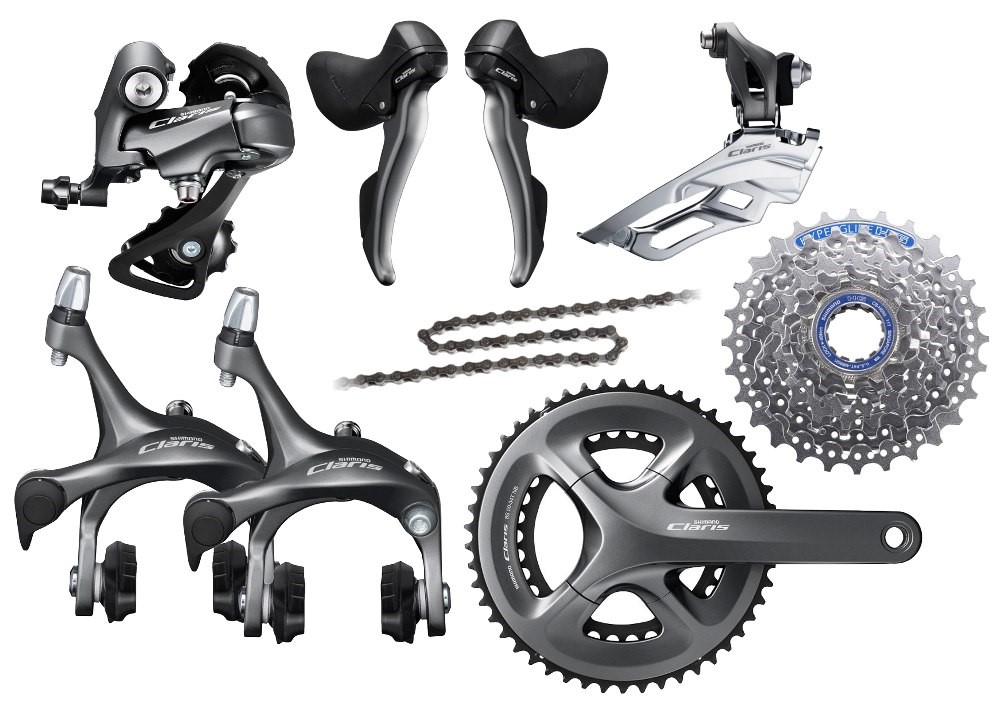
Shimano Claris
Specifications
Reasons to buy
Reasons to avoid
Claris is Shimano's entry-level eight-speed groupset, which you'll find on the lowest-priced models of many brands' ranges. Like Sora, it benefits from a similar look to Shimano's pricier mechanical road bike groupsets, with cables under the bar tape for a neat appearance. There are flat bar shifters and it even offers downtube shifters as an option.
It's rim brake only and, with only eight ratios, although it provides an adequate gear spread for many road riders, jumps between gears can be large with the wider range cassettes.
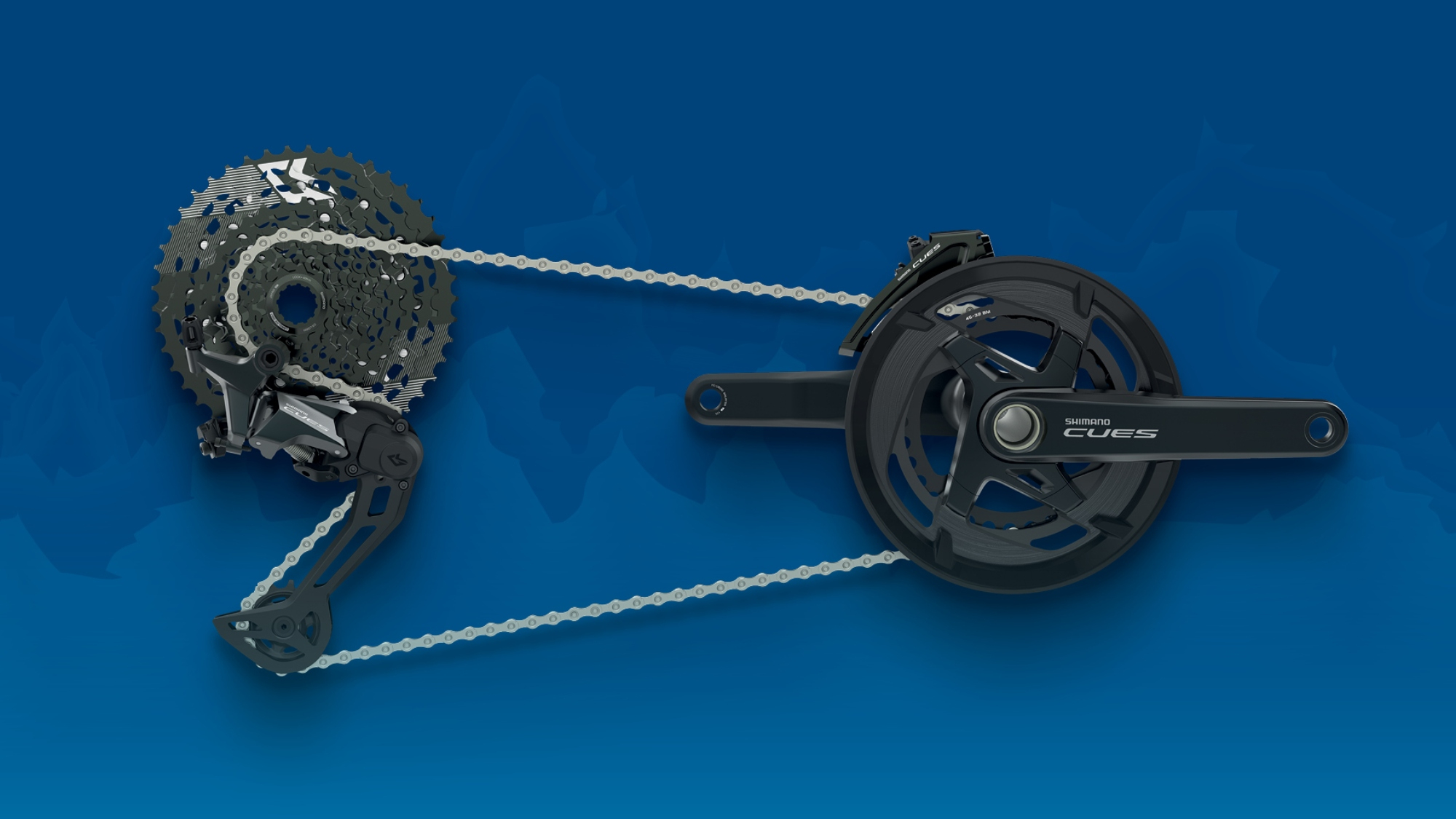
Shimano CUES
Specifications
Reasons to buy
Reasons to avoid
Shimano released CUES as an effort to unify component compatibility of its lower-tier 9, 10 and 11-speed groupsets. It was originally launched for flat bars and aimed at commuters and MTB's but has since been updated with drop bars to cover the needs of road and gravel riders.
While it's currently being run alongside the existing budget Shimano groupsets, Shimano says it will eventually replace Tiagra and Sora (Essa will replace the 8sp Claris).
It's also worth noting that CUES isn't available as a complete groupset, instead it's more likely to be found specced as the OEM groupset on the best budget road bikes and best budget gravel bikes.
The groupset uses Shimano's Shimano’s Linkglide tech, rather than its fancier 12-speed Hyperglide+ tech. As CUES uses a common component set that will work with 11, 10 and 9-speed drivetrains and across the different disciplines, it simplifies the range for bike makers and riders. It also allows riders to swap a few components to add extra speeds to their drivetrain, rather than needing to completely replace their groupset.
How to choose the best road groupset for you
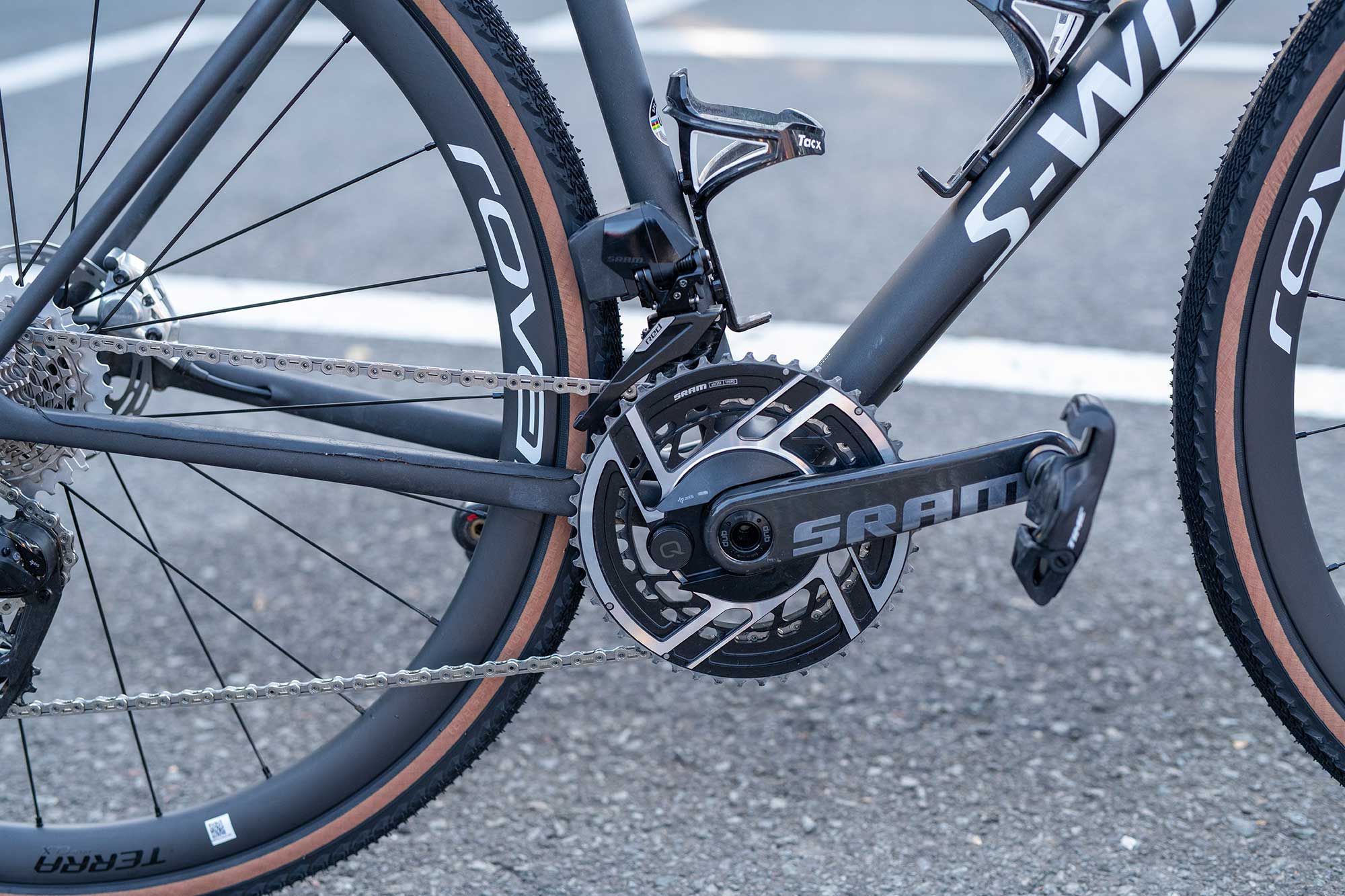
What is a groupset?
The groupset comprises everything needed to make the bike go and stop. We're talking crankset, chain, shifters, derailleurs, cassette and brakes.
Everything else is either the rolling chassis (frameset and wheels) or finishing kit (seatpost, bars, saddle, tyres etc).
Is electronic shifting worth it?
Electronic shifting, regardless of the system, has a number of advantages. It never goes out of true, it shifts perfectly every time and faster than mechanical equivalents, and it is better at shifting under load.
It also offers options to alter shifting behaviours, such as automatic trimming of the rear derailleur as you change chainrings or completely sequential shifting where the derailleurs decide for you when to make a front shift. You can add satellite shifters to bar tops or drops for a second shifting position.
It's expensive and reliant on batteries, so if you're on a budget or a bit forgetful, then you might be better off with old-fashioned cables.
Cable-actuated shifting has worked since time immemorial and is as good now as it has ever been. While electronic shifting dominates the upper tiers, if you choose Campagnolo, you can still get the very highest level with cables.
What's more, the tech from the very best cabled groupsets of a few years ago has already been amalgamated into the mid-range and budget groupsets of today, meaning you don't have to spend an absolute fortune to get decent shifting and almost the same looks as pricier alternatives.
Are disc brakes worth it?
As with electronic shifting, the upper tiers of componentry are increasingly dominated by hydraulic disc brakes and very little, if any, R&D is going into improving rim braking.
At the mid-range, this trend has become more evident too, and so to futureproof your choices, we'd recommend going disc. However, rim brakes haven't stopped working just because discs are on the scene, so for those with smaller budgets, retro tendencies, or for weight weenie lunacy, rim brakes still have something to offer. Just don't expect the same level of performance, especially in the wet.
Can I put any groupset on my bike?
Alas, no.
Not everything is compatible, and older frames might struggle to take new bits. Likewise to run discs you need a disc compatible frame.
SRAM has put another fly in the ointment with its latest Direct Mount Red XPLR AXS, which only fits on UDH spec framesets. The tech is bound to trickle down to lower priced 1x SRAM groupsets in future.
Your bottom bracket will also impact which cranksets you can run. However, a lot of issues have a workaround, so if you're wedded to the idea of running modern Super Record on a vintage Colnago there's probably a way of doing it.
Don't be fooled into thinking you can mix between manufacturers or different groupset speeds though. Some limited combinations are possible, but for ease it's best to stick to a single system, especially once electronics enter the game.
1x and 2x systems may not be completely compatible either and 1x and 2x derailleurs and cassettes may not work together, even within the same groupset.
Even the amount of cable that moves when you shift gear may differ between groupset speeds and generations, so shifters and derailleurs with the same number of speeds or same groupset name but different series numbers may not work properly together.
How do I choose the right gear?
Unless you're Filippo Ganna, you probably won't be needing a 60T front chainring. For the majority of us, a compact (50/34T) or a semi-compact (52-36T) crankset is probably the best place to start, depending on the terrain you ride and your fitness level.
If you're racing, then maybe a 53/39T or 54/40T might be more your thing, but you're only likely to find this as an option in the most expensive groupsets.
As derailleurs get more capable and gear ranges get larger, the front chainrings become less of a concern too, which helps. A 10-36T cassette certainly opens up more terrain than an 11-25T ever did.
What is UDH?
UDH stands for Universal Derailleur Hanger. A derailleur hanger is a piece of metal that connects your rear derailleur to the frame, and is designed to bend or break in the event of a crash to protect your frame from breaking instead.
Historically, derailleur hangers have been designed in conjunction with a frame, meaning you need to find the correct one for your bike when the time comes to replace it. UDH is a new type that also connects through the derailleur itself in a different way. All frame makers are allowed to license it, and at the moment only SRAM groupsets are compatible, but ultimately it's working towards a 'universal' solution that should simplify things for everyone. It's still being adopted, so at the moment, you'll need to look for a UDH-compatible frame.
The latest race content, interviews, features, reviews and expert buying guides, direct to your inbox!

Will joined the Cyclingnews team as a reviews writer in 2022, having previously written for Cyclist, BikeRadar and Advntr. He’s tried his hand at most cycling disciplines, from the standard mix of road, gravel, and mountain bike, to the more unusual like bike polo and tracklocross. He’s made his own bike frames, covered tech news from the biggest races on the planet, and published countless premium galleries thanks to his excellent photographic eye. Also, given he doesn’t ever ride indoors he’s become a real expert on foul-weather riding gear. His collection of bikes is a real smorgasbord, with everything from vintage-style steel tourers through to superlight flat bar hill climb machines.
